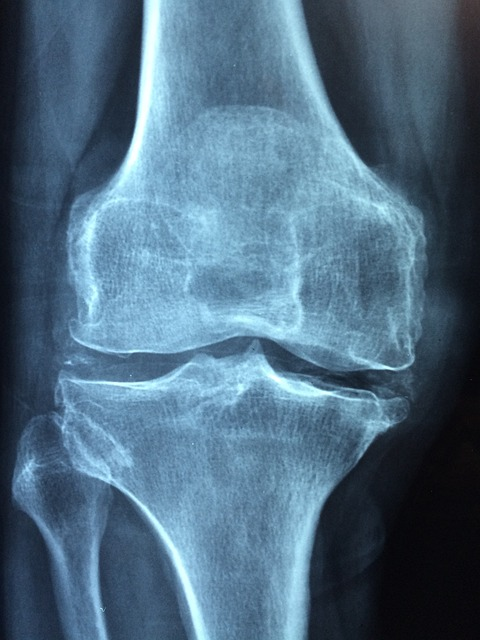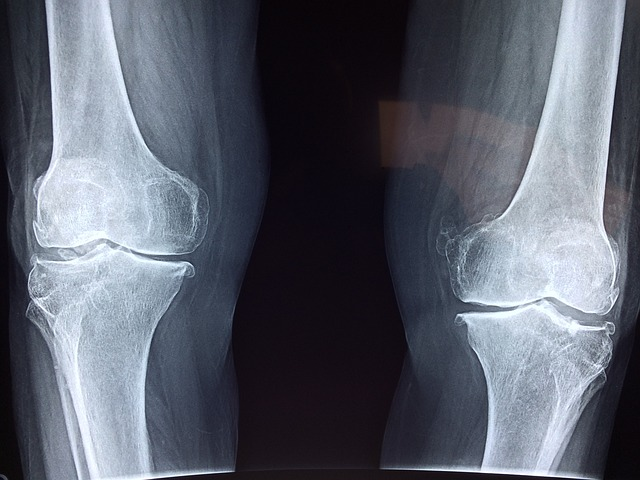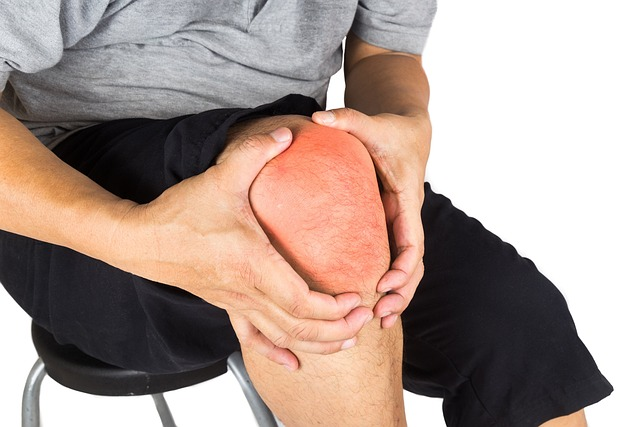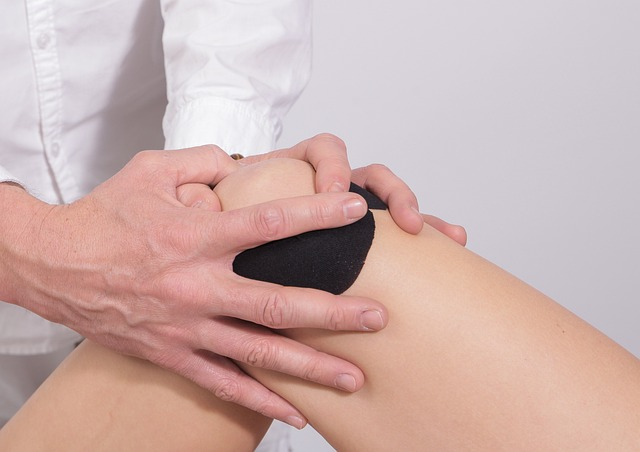Are you looking to gain an understanding of knee conditions better? Whether it’s a recent twinge or a long-term niggle, knowing about your knees is the first step towards addressing the pain. In this article, we’ll cover the essentials of knee health—how to identify key symptoms, various conditions, and their treatments—without drowning you in complex terminology. Start your journey to relief and informed care right here.
Key Takeaways
- The knee is a complex joint where the femur, tibia, and patella converge with ligaments, tendons, and cartilage to provide stability and mobility. Common conditions include ACL injuries, meniscus tears, and patellofemoral pain syndrome.
- Symptoms of knee problems can vary from minor discomfort to severe pain and swelling. Prevention strategies for knee conditions may include regular exercise, maintaining a healthy weight, and wearing proper footwear.
- Treatment options for knee conditions range from non-operative methods like RICE protocol and physical therapy to surgical interventions. Rehabilitation is crucial for recovery, with timelines varying based on injury severity and individual patient factors.
Knee Anatomy and Function

Our knees are marvels of natural engineering, a complex system of bones, ligaments, tendons, and cartilage working seamlessly together to provide stability and mobility. This allows us to perform everyday tasks, from walking to jumping, with ease. Understanding the anatomy of our knees is the first step toward recognizing knee problems and preventing knee pain.
The knee joint is a synovial joint, where the femur, tibia, and patella meet at two articulations – the patellofemoral and tibiofemoral. This structure allows the knee to swing open and closed like a hinge on a door. The smooth, low-friction movement of the knee is facilitated by hyaline cartilage, which lines the joints and caps the ends of the bones.
Stability in the knee is maintained by ligaments and tendons. Ligaments are categorized into collateral (medial and lateral) and cruciate (anterior and posterior) ligaments, controlling the side-to-side and front-to-back movements, respectively. Tendons, on the other hand, connect muscles to bones, enabling movement as these muscles contract and relax. In a healthy knee joint, the ability to flex is between 133 and 153 degrees, and it can extend fully straight.
Bones and Joints
The knee joint is composed of three bones – the femur or thighbone, the tibia or shinbone, and the patella or kneecap. These bones form two main articulations – the patellofemoral joint, where the patella meets the femur, and the tibiofemoral joint, where the tibia meets the femur. The stability and mobility of the joint heavily rely on the integrity of these knee bones and their connections.
Ligaments and Tendons
Ligaments and tendons play a vital role in providing stability and facilitating movement in the knee. Collateral ligaments, including the medial collateral ligament and lateral collateral ligament, along with cruciate ligaments (anterior and posterior) restrict movement and stabilize the knee joint.
Key fibrous tissues called tendons bridge muscles to bones, enabling movement as these muscles contract and relax. The quadriceps tendon, for instance, connects the quadricep muscles to the patella, and the patellar tendon connects the patella to the tibia, both pivotal for knee extension.
Cartilage
The cartilage within the knee joint significantly contributes to providing stability and facilitating smooth movement. This includes hyaline cartilage, which lines the articulating surfaces of the knee, and fibrocartilage, which forms the menisci that cushion the knee by sitting between the femur and tibia. This cushioning and smooth movement are vital for preventing knee pain and avoiding common knee injuries.
Common Knee Conditions

Our knees are prone to a variety of conditions due to their complex structure and the strain they endure daily. Knee injuries can result from sudden movements, such as a quick turn during a football game, or from degenerative processes related to aging or overuse. The most common knee injuries are tears of soft tissues like ligaments and menisci, as well as fractures and dislocations, including a kneecap torn ligament. These injuries can result from sports or accidents. Each injury affects the knee in unique ways and requires different treatment approaches.
Knee cartilage injuries often arise from sudden twists or turns, repetitive impact activities, or can develop over time due to overuse or aging. These injuries can cause knee pain and instability, which can lead to an unstable knee torn cartilage. Middle-aged individuals participating in sports requiring running or jumping are also susceptible to knee conditions, which can arise from falls or direct force to the front of the knee.
Moreover, collateral ligament injuries, which are commonly caused by forces that push the knee sideways, are typically contact injuries. These injuries can trigger knee problems and cause knee pain, making it difficult to bear weight on the knee. Each of these conditions will be discussed in more detail in the following subsections.
Anterior Cruciate Ligament (ACL) Injuries
One of the most common knee injuries is an anterior cruciate ligament (ACL) injury. This type of injury often occurs due to activities that involve sudden changes in direction or improper landings after jumps. Sports like soccer, football, and basketball are common causes of anterior cruciate ligament injuries. Individuals with previous knee injuries face a higher risk of subsequent ligament injuries in the knee, including the ACL.
The recovery from knee sprains typically involves the RICE method – rest, ice, compression, and elevation. However, severe injuries may also require physical therapy.
Meniscus Tears
Meniscus tears are a common knee injury that affects the cartilage, which stabilizes and cushions the knee joint. These tears can be radial, horizontal, or longitudinal, each affecting the knee in different ways.
For instance, a ‘bucket handle’ tear is a severe form of meniscus injury that can cause the knee to lock, hindering its function.
Patellofemoral Pain Syndrome
Patellofemoral Pain Syndrome (PFPS), commonly known as ‘runner’s knee’ or ‘jumper’s knee’, is another common knee condition. It features pain at the front of the knee and surrounding the patella (kneecap). PFPS affects both athletes and non-athletes and can be triggered by factors such as improper alignment of the kneecap, athletic overuse, and sudden changes in activity levels or intensity.
Recognizing Symptoms of Knee Problems

Recognizing the symptoms of knee problems is the first step toward seeking appropriate help and treatment. Symptoms can vary greatly, from minor knee pain and discomfort to severe pain and swelling that can limit mobility. Symptoms of knee problems can include:
- Redness, warmth, and swelling, indicate inflammation within the knee joint
- Sudden onset of knee pain, as after an injury or an intense workout
- Gradual onset of knee pain, as with degenerative conditions like osteoarthritis
If you are experiencing any of these symptoms, it is important to consult with a healthcare professional for a proper diagnosis and treatment plan.
Weakness or instability in the knee, such as feeling that the knee may give out, may indicate underlying knee injuries or conditions. This instability can be a sign of an unstable knee or torn cartilage. Cartilage damage and other knee issues may manifest as popping or crunching noises upon movement and an inability to fully straighten the knee. These symptoms can be distressing, but understanding their meaning can help guide effective treatment decisions.
Pain and Swelling
Pain, swelling, and a sore knee are common symptoms of many knee conditions, which can be attributed to various causes of knee pain, including chronic knee pain. These causes can result from trauma, overuse injuries, or underlying diseases, such as bursitis, where inflammation of the fluid sacs around the joint occurs.
Swelling in the knee, also known as knee effusion, is the accumulation of fluid in or around the knee joint, contributing to the pain and swelling experienced in various knee conditions.
Instability and Unstable Knee
Instability is another key symptom of knee problems. This is typically a symptom of damage to the ligaments or weakness in the muscles that support the knee joint. Symptoms of knee instability include:
- Sensations of the knee giving out
- Shifting
- Slipping
- Losing support, particularly during weight-bearing activities.
Knee instability may result in reduced confidence in balance and functional limitations, which can lead to a fear of falling and a decrease in physical activity.
Reduced Range of Motion
Reduced range of motion is another symptom of many knee conditions, including rheumatoid arthritis. This can be manifested as difficulty in fully extending or flexing the knee. Inflammation, arthritis, or injury can lead to stiffness, swelling, and muscle tightness, causing a decreased range of motion in the knee.
This reduced range of motion can naturally diminish with age, but may also be affected by various medical conditions. This can result in difficulties with activities such as walking, climbing stairs, or transitioning between sitting and standing.
Risk Factors and Prevention

Just as there are numerous knee conditions, there are also numerous risk factors. Factors such as being overweight, having previous knee injuries, and genetic factors can all contribute to knee problems. But while we can’t control all risk factors, we can take steps to prevent knee pain and injury. This is where prevention strategies come into play, which include regular low-impact aerobic exercises, maintaining optimal body weight, and wearing appropriate footwear during exercise and sports.
Knowledge of these risk factors can help us take preventive measures. For example:
- Regular low-impact aerobic exercises can strengthen the muscles around the knee, providing better support and reducing the risk of injuries.
- Maintaining optimal body weight through diet and exercise is crucial for preventing excess stress on knee joints.
- Incorporating flexibility and stretching exercises into a daily routine can improve knee joint mobility and prevent injuries.
Risk Factors
Certain risk factors can increase the likelihood of developing knee problems. These include:
- Degenerative changes such as osteoarthritis
- Being overweight or obese
- Participating in certain sports that put a strain on the knee joint
- Previous knee injuries
These factors significantly raise the chance of future knee injuries.
Additionally, wearing inappropriate footwear for sports or activities can increase knee pressure and escalate injury risk.
Prevention Strategies
Prevention is always better than cure, especially when it comes to knee health. Regular strengthening exercises can significantly strengthen leg and core muscles, providing stability to the knee joint. Interventions targeting muscle strengthening and functional exercises have been shown to reduce knee instability and improve knee function.
Ensuring proper technique during sports, such as landing softly on the balls of the feet with bent knees, can also be beneficial in preventing knee injuries.
Diagnosis and Treatment Options
Upon the occurrence of knee problems, obtaining a proper diagnosis and suitable treatment options is of utmost importance. Diagnosis of knee conditions begins with a thorough medical history and physical examination to assess pain, swelling, tenderness, warmth, range of motion, and structural integrity. This is followed by imaging tests such as X-rays, MRIs, or CT scans to evaluate the bones, ligaments, and other structures of the knee.
Strengthening muscles around the knee and improving joint stability and function through physical therapy is a common treatment for knee conditions. Orthopedic surgery may be considered for more serious injuries or conditions that do not respond to conservative treatments, to repair or replace damaged components of the knee.
Diagnostic Process
The diagnostic process for knee conditions typically includes a medical examination and the use of diagnostic procedures such as X-rays, MRIs, CT scans, or arthroscopy. These tests create detailed images of the knee’s internal structures, identifying damage or disease in bones, ligaments, or muscles.
In specific cases, a radionuclide bone scan may be performed to show blood flow and cell activity within the bone for more complex diagnostic needs.
Treatment Options
Treatment options for knee problems include a range of non-operative methods and surgical interventions tailored to the type and severity of the condition. Non-surgical treatments often entail:
- The RICE protocol
- Oral medications like NSAIDs and acetaminophen
- Joint injections such as steroids, gel shots, and PRP to address knee pain and inflammation.
Additional non-surgical therapies to relieve pain may include:
- the use of knee braces for stability
- aspiration of excess fluid to reduce pain and stiffness
- customized rehabilitation exercises for specific injuries like ACL tears or cartilage damage.
Rehabilitation and Recovery
Following a knee injury or surgery, rehabilitation and recovery play a vital role in the healing process. Post-surgery rehabilitation focuses on:
- Regaining full joint movement
- Stimulating the surrounding muscles
- Reducing swelling
- Easing discomfort
- Preventing blood clots
The process often starts with improving knee extension and can be performed at home. It is important to communicate regularly with the knee doctor and rehab specialist to ensure that the rehabilitation process isn’t rushed, thereby preventing serious injury.
Quad sets, straight leg raises, and other strength training exercises are commonly included in rehabilitation exercises to bolster leg and core muscles, thereby providing stability to the knee joint. Physical therapy interventions are developed for conditions such as osteoarthritis and patellofemoral pain syndrome, focusing on targeted muscle strengthening, joint protection strategies, and movement retraining.
Following surgery, physical therapy becomes instrumental in rebuilding strength and ensuring a smooth recovery. Therapists create personalized treatment plans to cater to the unique challenges faced by each patient.
Recovery Timelines
The recovery timeline after a knee injury or surgery can vary widely, depending on the severity of the condition, the type of surgery, and individual patient factors. For example, recovery time for a knee sprain can range from a few weeks to several months, depending on the severity of the injury.
For ACL surgery, a patient typically undergoes a rehabilitation period ranging between nine and twelve months. Before clearing an athlete to return to sport, physical performance measures such as pain-free sport-specific movements are evaluated.
Physical Therapy
Physical therapy plays an integral role in rehabilitation and recovery from knee conditions. A regimen of specific exercises can significantly strengthen leg and core muscles, providing stability to the knee joint. Some exercises that may be included in a physical therapy program for knee conditions are:
- Quad sets
- Straight leg raises
- Hamstring curls
- Calf raises
- Step-ups
- Wall squats
- Lunges
Individualized physical therapy interventions are developed for conditions such as osteoarthritis, patellofemoral pain syndrome, and after knee surgeries, focusing on targeted muscle strengthening, joint protection strategies, and movement retraining.
Following surgery, physical therapy becomes instrumental in rebuilding strength and ensuring a smooth recovery. Therapists create personalized treatment plans to cater to the unique challenges faced by each patient.
Returning to Activity
The process of resuming normal activities after rehabilitation is gradual and necessitates careful guidance from healthcare professionals. A personalized regimen is crucial for patients to safely return to their daily routine and should be tailored by a therapist to fit their specific needs and limitations after knee rehabilitation.
Individuals who have experienced knee sprains are advised to gradually return to normal activities post-rehabilitation to avoid the risk of re-injury.
Dr. Kevin D. Plancher’s Expertise in Knee Care
Dr. Kevin D. Plancher, a seasoned expert in orthopedics and an innovator in knee treatments, is our guide on this journey to understand knee health. With over 14 years of recognition as a Top Doctor, Dr. Plancher’s experience and contributions to the field of orthopedics are unparalleled. His practice, Plancher Orthopaedics & Sports Medicine, specializes in innovative knee replacements and state-of-the-art robotic surgery options.
Dr. Plancher has:
- Served as a team physician for numerous U.S. sports teams
- Demonstrated his expertise in handling sports-related knee conditions
- Presented at prestigious events like the American Academy of Orthopaedic Surgeons Annual Meeting
- Helped countless individuals regain their mobility and live pain-free
His commitment to the continuous advancement of orthopedic knowledge shines through his leadership in the field and his patient-centered approach.
Dr. Plancher’s Background
Dr. Plancher’s credentials speak volumes about his expertise. He completed:
- Master’s in Science in Physiology at Georgetown University
- Doctorate in Medicine at Georgetown University
- Surgical training as part of Harvard’s Combined Orthopaedic program
- Master of Public Health from Columbia University
His extensive experience and innovative contributions in orthopedics have earned him recognition as a Top Doctor for 14 consecutive years.
This, along with his leadership roles in sports medicine, including:
- serving as a team physician for the US Ski Team
- serving as a team physician for the Free Skiing Team
- serving as a team physician for the Snowboarding Team
- serving as a team physician for the New York Lizards
make him a trusted expert in the field of knee care.
State-of-the-Art Knee Treatments
Patients at Plancher Orthopaedics & Sports Medicine can look forward to state-of-the-art knee treatments. The practice specializes in innovative knee replacements, torn ACL treatments, and advanced robotic surgery options. Dr. Plancher believes in a treatment philosophy that includes reducing or eliminating pain, restoring joint function, and considering surgical treatment when necessary.
Whether it’s a minor knee pain or a major knee surgery, patients can be assured of receiving comprehensive and personalized care under Dr. Plancher’s expert guidance.
Summary
In conclusion, understanding the intricacies of knee anatomy, recognizing symptoms of common knee conditions, and being aware of risk factors and prevention strategies can significantly improve our knee health. Additionally, getting a proper diagnosis and choosing the right treatment options, including engaging in physical therapy and committed rehabilitation, can help manage knee conditions effectively. Under the expert guidance of professionals like Dr. Kevin D. Plancher, individuals can navigate the complexities of knee health with confidence and continue to enjoy an active, pain-free lifestyle.
Frequently Asked Questions
How do I know if my knee pain is serious?
If you experience an inability to bear weight, severe pain, or knee instability, it is advisable to contact your healthcare provider for evaluation and guidance. Seek medical attention if you experience these symptoms.
What is the most common disease in the knee?
Osteoarthritis is the most common disease in the knee, affecting middle-aged and older individuals. It is a degenerative condition where the cartilage in the knee joint gradually wears away.
How do you diagnose what’s wrong with my knee?
To diagnose knee problems, your doctor may use X-rays, MRIs, CT scans, arthroscopy, or radionuclide bone scans to get a clear picture of the issue. These tests provide detailed images to help identify the problem with your knee.
What is the most painful knee condition?
Osteoarthritis is the most painful knee condition, characterized by the progressive wearing down of cartilage in the knee joint, leading to significant pain.
What are some common knee conditions?
Common knee conditions include anterior cruciate ligament (ACL) injuries, meniscus tears, and patellofemoral pain syndrome. These can cause pain and limited mobility in the knee.




 William D. Murrell, MD
William D. Murrell, MD Thomas B. Evely, DO
Thomas B. Evely, DO Clifford Voigt, MD
Clifford Voigt, MD Karthikeyan Chinnakkannu, MD
Karthikeyan Chinnakkannu, MD Max N. Seiter, MD
Max N. Seiter, MD Demetris Delos, MD
Demetris Delos, MD Lauren M. Fabian, MD
Lauren M. Fabian, MD